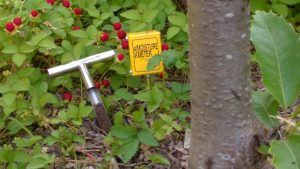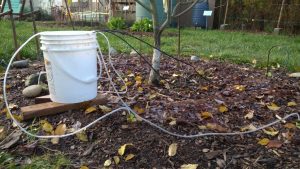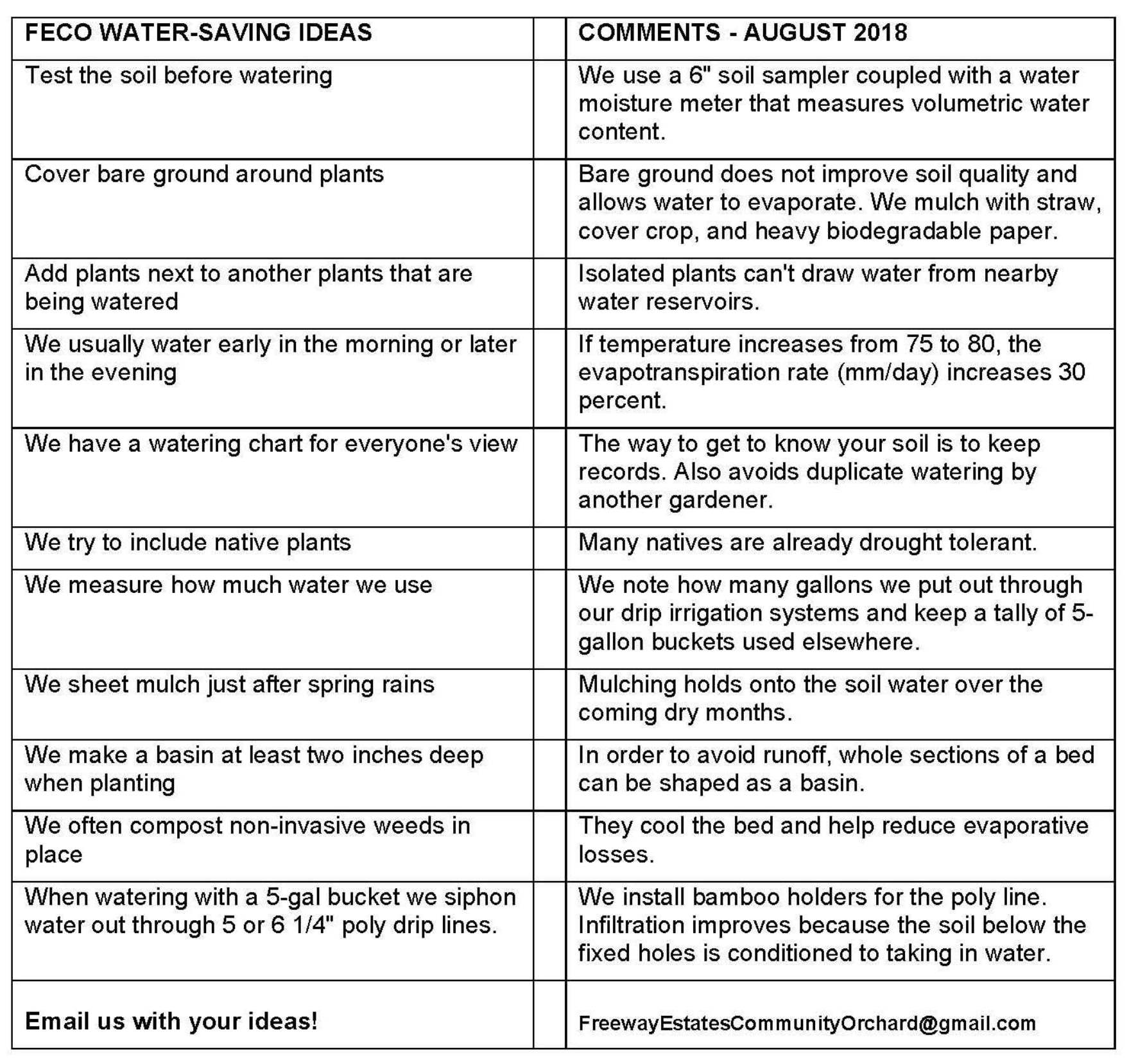Water-Measuring Tools and Other Water-Saving Ideas
There are the obvious water-saving techniques that reduce runoff and evaporative losses but the not-so-obvious and more-important benefit of watering according the needs of the plant is to avoid pushing the soil nutrients down past the root zone (leaching). From WSU publication EB 0482 on Home Lawns, “Overwatering can cause soggy conditions and may (1) leach plant nutrients, especially nitrogen; (2) encourage weeds such as speedwell, buttercup, and annual bluegrass; and (3) cause oxygen starvation of the grass roots.”
We had a real aha moment this year when we began using a soil moisture meter and a soil sampler together to check the water needs of plants and trees prior to watering. For instance, where the persimmon tree grows, we have only watered once this summer. On the other hand, where the William’s Pride apple tree grows, we can’t seem to water enough. (We think that the proximity of two Leyland Cyprus is causing a water shortage in nearby plants.)
The two tools working together are best; if the moisture meter gives an odd reading you can check it with the actual soil plug.
We water the tree guilds with 5-gallon buckets that sit on blocks and have 5 or 6 quarter inch poly hose lines flowing out toward the drip line. This year we marked, with hollow bamboo pieces, where the hoses go for all watering sessions. We hope the tree will make more efficient use of the water if the roots know exactly where the water will consistently be delivered.
In addition to a focus on testing the soil before we water and on making and using good compost, other general water-saving habits we strive to implement are listed in Table 2:
FECO Water Conservation Project Table 2



